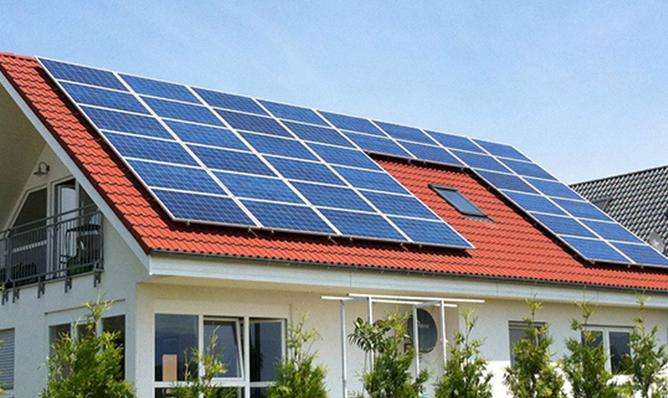First of all, your proposition is false. Ocean energy is a broad concept, including many types of tidal energy, and tidal energy comes from the gravity of the moon, sun and other planets, and other ocean energies come from. solar radiation. Nuclear energy has nothing to do with the sun. I remember it is mentioned in high school textbooks that energy sources that have nothing to do with the sun are mainly nuclear energy and tidal energy. Sometimes don't take these concepts too hard. seriously. They are not absolute. The exam will not ask you this question.
Question 1: What are the new sources of marine energy: salinity difference energy, temperature difference energy, wave energy, tidal energy, energy of ocean currents. , and others?
Question 2: What are the different forms of new energy sources?They all come directly or indirectly from thermal energy generated deep within the sun or the earth? Including energy produced from solar energy, wind energy, biomass energy, geothermal energy, nuclear fusion energy, hydropower and ocean energy, as well as biofuels and hydrogen derived from renewable energy sources. New energy can also be said to include various renewable energy and nuclear energy. Compared with traditional energy, new energy generally has the characteristics of lower pollution and large reserves, which is of great importance in solving the serious problems of environmental pollution and resource depletion (in particularly fossil fuels) in today's world. At the same time, given that many new energy sources aret distributed equally, it is also of great importance in resolving energy-induced wars. According to the world's claims, resources such as oil and coal mines will decline at an accelerating rate. Nuclear power and solar power will soon become the main sources of energy. New energies
The United Nations Development Program (UNDP) divides new energies into three categories: large and medium hydropower; new renewable energies, including small hydroelectricity (Small-hydro), solar energy (Solar), and wind energy (Eolienne), Modern biomass, Geothermal energy, Ocean (tidal energy);
Solar energy, wind energy, biomass energy, biodiesel, ethanol fuel, new energy vehicles, fuel cells, hydrogen energy, waste energy generation, building energy conservation, energygeothermal, tidal energy, dimethyl ether, flammable ice. , etc.
Question 3: What are the new marine energies? A little more. THANKS! Tides
Question 4: What does ocean energy include? Ocean energy refers to renewable energy attached to seawater. The ocean receives, stores and emits energy through various physical processes. Tides, waves, temperature differences, salinity gradients, currents, etc. exist in the ocean.
Tidal energy
Temperature difference energy
Salinity difference energy
Marine current energy
Marine wind energy
Ocean thermal energy
baike.baidu/link?url=ffopuVMUTz8NV_Os1aSwC-DVv4eWWQR9GUZhQwQHKwebSL3Zz6U0p7MUMp1ZaRQWYOiI3CErKZ-HcsjkOv1NtK
Question 5: What new sources of energy are currently available on earth? Solar energySolar energy generally refers to the radiant energy of sunlight. The main forms of solar energy utilization include three main methods: photothermal conversion, photoelectric conversion and photochemical conversion of solar energy.
Solar energy in the broad sense is the source of many energies on land, such as wind energy, chemical energy. , potential energy of water, etc. caused by solar energy or converted to energy form. The main methods of using solar energy include: solar cells, which convert the energy contained in sunlight into electrical energy through photoelectric conversion, which use the heat of the sun to heat water and use hot water to produce electricity; Solar energy can be divided into two types: 1. Photovoltaic solar panel module is a disppower generation device that generates direct current when exposed to sunlight. It is made of thin, solid photovoltaic cells that are made almost entirely of semiconductor materials (such as silicon). ). Since there are no moving parts, it can operate for a long time without any wear and tear. Simple photovoltaic cells can power watches and computers, while more complex photovoltaic systems can light homes and power the grid. Photovoltaic panel modules can take different shapes and the modules can be connected to generate more electricity. In recent years, photovoltaic panel components have been used on roofs and building surfaces, and are even used in windows, skylights or protective devices. These photovoltaic installations are often called frame-mounted photovoltaic systems.ments. 2. Solar Thermal Energy Modern solar thermal energy technology bundles sunlight and uses its energy to produce hot water, steam and electricity. In addition to using appropriate technology to collect solar energy, buildings can also harness the sun's light and heat by incorporating appropriate features into their design, such as large south-facing windows or using materials from construction that slowly absorb and release heat from the sun. Nuclear energy Nuclear energy is the energy released by the nucleus of an atom by converting its mass, according to Albert Einstein's equation E=mc^2;, where E=energy, m=mass and c= constant speed of light. There are three main forms of nuclear energy release: A. Nuclear fission energy. Nuclear fission energy is the energy released by the fission of certain nheavy atomic cores (such as uranium 235, uranium 238, plutonium 239, etc.). B. Nuclear fusion energy consists of two A reaction in which one or more hydrogen nuclei (such as the hydrogen isotopes - deuterium and tritium) combine to form a heavier nucleus, and a loss of mass occurs at the same time to release huge energy is called a nuclear reaction fusion reaction, and the energy released is called nuclear fusion energy. C. Nuclear Decay Nuclear decay is a much slower natural form of fission that is difficult to use due to its slow release of energy. The main problems associated with the use of nuclear energy are: (1) Low resource utilization (2) Nuclear energy produced. after the reaction Waste has become a potential harmful factor for the biosphere and its final processing technology has not yet been completely resolved (3) Reactor... >>
Question 6: What sources of energy does the ocean have? There are oil and minerals (coal mines, gold mines and other metallic minerals)














